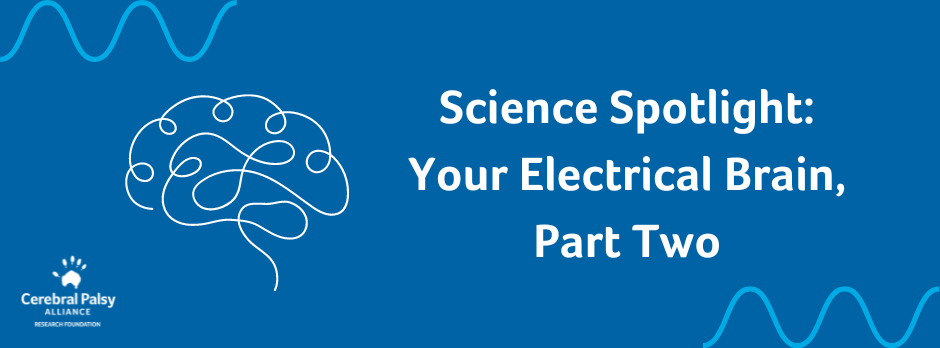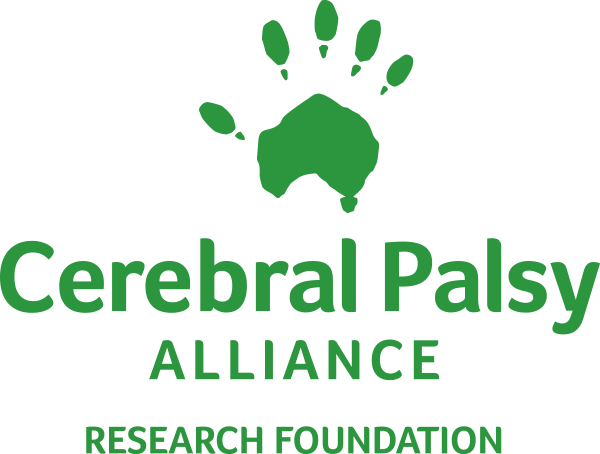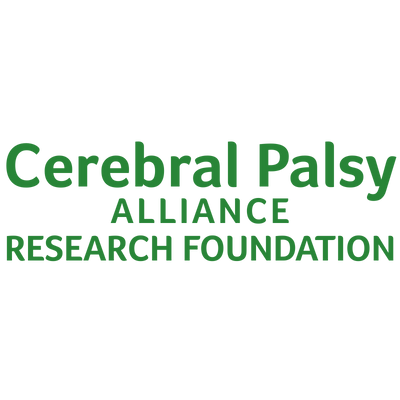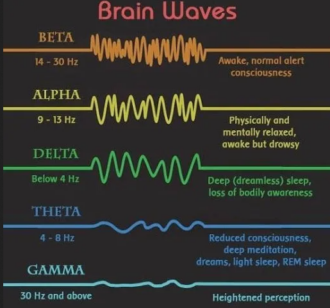
Science Spotlight: Your Electrical Brain, Part Two
By Dr. Sara Lewis
Dystonia — involuntary muscle contractions causing abnormal movements and postures — co-occurs in an estimated 70% of people with spastic cerebral palsy (CP). Dystonia severity is correlated with motor impairments and worse outcomes, including pain. There are limited treatment options currently available to help individuals with dystonia, in part because the mechanisms leading to these movements are unknown. Deep brain stimulation (DBS) is the most effective treatment for severe dystonia cases that don’t respond to medication.
With DBS, electrodes are placed in the brain to deliver an electrical current. It is still unclear exactly how DBS works, but it is thought to be due to the electricity blocking, shrinking, or normalizing the abnormal activity of nearby neurons and connections over time. In some ways, DBS is like a pacemaker for the brain, helping it return to more normal function.
The activities of the neurons produce different frequency bands associated with different brain states. The best-known example is alpha waves — where the brain is in a relaxed and meditative state and the frequency of synchronized activity is slower.
In the motor cortex, where the brain plans movements, beta waves are suppressed prior to and during movement changes. Beta activity is conversely increased when resisting or suppressing movements. In tremor, dystonia, and other disorders of too much movement, an increase in activity in the beta frequency range is observed. Moreover, in essential tremor, successful response to DBS is associated with reduced beta frequency activity compared to pre-implantation levels.
There is some evidence that moving the abnormal beta activity closer to baseline also improves symptoms in childhood dystonia. Knowing what frequency bands to target is important for setting the correct stimulation parameters on the DBS electrodes.
However, the frequency bands associated with abnormal movements have not been well studied in dystonia caused by a brain injury in CP. There are also questions about how voluntary movements change this pattern of electrical activity.
Cerebral Palsy Alliance Research Foundation (CPARF) has funded work by Terence Sanger at University of California, Irvine and Children’s’ Hospital Orange County to address these gaps. These studies examine how regions of the brain are connected and activated during dystonic movements and how DBS works to improve brain and movement function.
To do this, researchers implanted 12 patients with electrodes as a first step before their DBS surgery and compared recordings during movement and rest. They had to develop special software to measure brain activity during active DBS and during movements. Because DBS stimulation is actively generating electricity from the electrodes and movement creates artificial electrical signals called artifacts, researchers have to remove these additional signals from the recordings in order to only listen to neuronal activity.
The goal is to identify patterns of brain activity that occur during dystonic movements and postures. Then, after the patient has received DBS, to see how these electrical brain patterns changed by studying the recorded frequency bands and how well that compares to changes in the dystonic movements.
This research, funded in part by CPARF, helps us better understand how dystonia arises, what is happening in the brain during these movements, and how DBS is changing brain activity for dystonia patients. These findings can improve the effectiveness of DBS, including helping to predict the best places to implant DBS electrodes and what stimulation conditions will be most effective for optimal patient outcomes.
Resources:
Understanding Brain Wave States
Scientific Review of DBS in Dystonia, Including Increased Beta Frequency Activity
 About the Author: Dr. Sara Lewis is a Postdoctoral Research Associate at Phoenix Children’s Hospital working with Dr. Michael Kruer to identify genetic causes of cerebral palsy. She received her PhD in Neuroscience in 2015 with an emphasis in genetic neurodevelopmental disorders. Her work integrates human genetics with the fly model to study how genes leading to movement disorders changes in the brain. Her work also addresses the challenges implementing genetics findings in the clinical environment. Her research is funded by CPARF.
About the Author: Dr. Sara Lewis is a Postdoctoral Research Associate at Phoenix Children’s Hospital working with Dr. Michael Kruer to identify genetic causes of cerebral palsy. She received her PhD in Neuroscience in 2015 with an emphasis in genetic neurodevelopmental disorders. Her work integrates human genetics with the fly model to study how genes leading to movement disorders changes in the brain. Her work also addresses the challenges implementing genetics findings in the clinical environment. Her research is funded by CPARF.
Fri 05 Dec 2025
An update on one of our most important initiatives: expanding access to life-changing assistive technology for Native Americans with disabilities.
Mon 08 Sep 2025
We’re proud to share that CPARF’s 2025 Remarkable US Accelerator cohort kicks off this week! This program supports disability-focused startups that are developing cutting-edge assistive technology.




